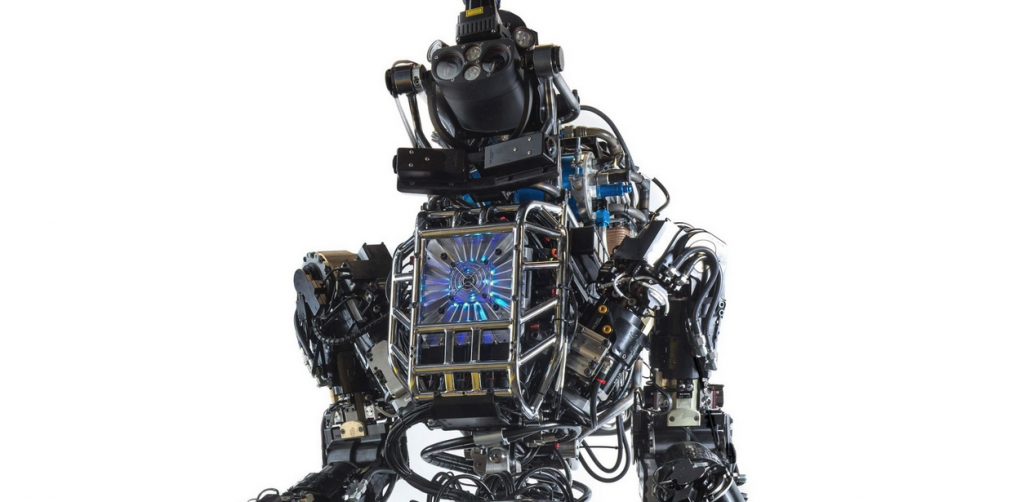We are approaching an age where robots will transform virtually every part of our society. Over the next decade or two the robotics industry will flourish as man looks towards technology for help in doing the things which are either too tedious, too expensive, or too dangerous for our biological bodies to handle.
One company leading the way in this area is the recently acquired Google subsidiary, Boston Dynamics. Acquired in late 2013, Boston Dynamics at the time was known for their biologically-inspired robots, including the Cheetah,  which could run up to 29 miles per hour, or the humanoid robot called PETMAN. Since then Google has been quietly ramping up R&D behind the company and hopes to be at the forefront of robotics development, which after several acquisitions over the last few years, they seemingly are.
which could run up to 29 miles per hour, or the humanoid robot called PETMAN. Since then Google has been quietly ramping up R&D behind the company and hopes to be at the forefront of robotics development, which after several acquisitions over the last few years, they seemingly are.
This month at the FAB 11 conference at MIT, Boston Dynamics founder, Marc Raibert, was on hand to show off a new and improved version of a humanoid robot they call Atlas. Atlas is a massive 1.88 meter, 156 kg (about 6’2″, 344 lbs) beast of a robot, which currently can navigate simulated terrain within a lab, and more recently, as Raibert showed in videos, can navigate actual outdoor terrain, such as wooded environments, as long as it’s tethered to a power supply.
![[Image: Gizmodo]](https://3dprint.com/wp-content/uploads/2015/08/b3.gif)
[Image: Gizmodo]
Most notably, these additional upgrades include new legs to better mimic their human counterparts. Currently the legs of Atlas include dozens of parts, all attached to one another with even more nuts and bolts. Complicated hydraulics systems and heavy components not only add weight to the robot, making it less agile, but also slow it down considerably. That’s why Raibert and his team are working to streamline the legs using 3D printing to a large extent. The new legs, which they are working on, but have yet to thoroughly test out, utilize a lattice like structure with many of the important components, such as the hydraulics, printed right into the actual structure.
“I can’t show you the robot yet, but we’re pursuing this pretty aggressively, and I think by the end of the year, you’ll see robots from us that use an approach of fabrication that’s more like that,” Raibert excitedly explained.
The new 3D printed legs, which you can see pictured in a rendering to the right, could drastically improve the efficiency as well as performance of Atlas. Through the use of 3D printing the company is able to improve the routing of important artificial fluid throughout the limbs, improving their ability to cool, while advanced multi-material surfaces will add to the overall function and durability of Atlas.
It will be interesting to see just how much 3D printing eventually plays a part within the robotics industry moving forward. We imagine that it’s already playing a major role in the design of many of these sophisticated units, and should continue to find applications in the fabrication of components for these robots themselves.
Let us know your thoughts on Google’s use of 3D printing in future versions of Atlas. Discuss in the Google/Boston Dynamics 3D Printing forum thread on 3DPB.com, and be sure to check out the video of Atlas below:
Subscribe to Our Email Newsletter
Stay up-to-date on all the latest news from the 3D printing industry and receive information and offers from third party vendors.
You May Also Like
3D Printing Unpeeled: New Arkema Material for HP, Saddle and Macro MEMS
A new Arkema material for MJF is said to reduce costs per part by up to 25% and have an 85% reusability ratio. HP 3D HR PA 12 S has been...
3D Printing News Briefs, January 20, 2024: FDM, LPBF, Underwater 3D Printer, Racing, & More
We’re starting off with a process certification in today’s 3D Printing News Briefs, and then moving on to research about solute trapping, laser powder bed fusion, and then moving on...
3D Printing Webinar and Event Roundup: December 3, 2023
We’ve got plenty of events and webinars coming up for you this week! Quickparts is having a Manufacturing Roadshow, America Makes is holding a Member Town Hall, Stratafest makes two...
Formnext 2023 Day Three: Slam Dunk
I’m high—high on trade show. I’ve met numerous new faces and reconnected with old friends, creating an absolutely wonderful atmosphere. The excitement is palpable over several emerging developments. The high...

































